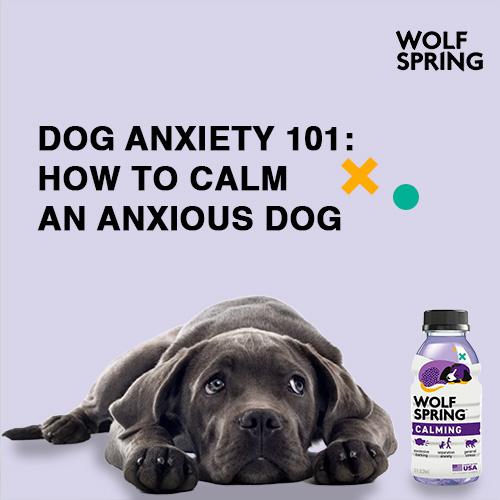Life can get stressful for even the happiest, go-lucky dogs. Whether it’s thunderstorms, fireworks, new people and situations, or separation anxiety, there are all kinds of things that can set our pups off. Unfortunately, stress and anxiety can make even the best behaved dogs act out by showing signs of aggression or destruction or just put them in full blown panic mode. As dog parents, we know we are happiest when our dogs are happy. When we calm the dog we are helping them be the best version of themselves.
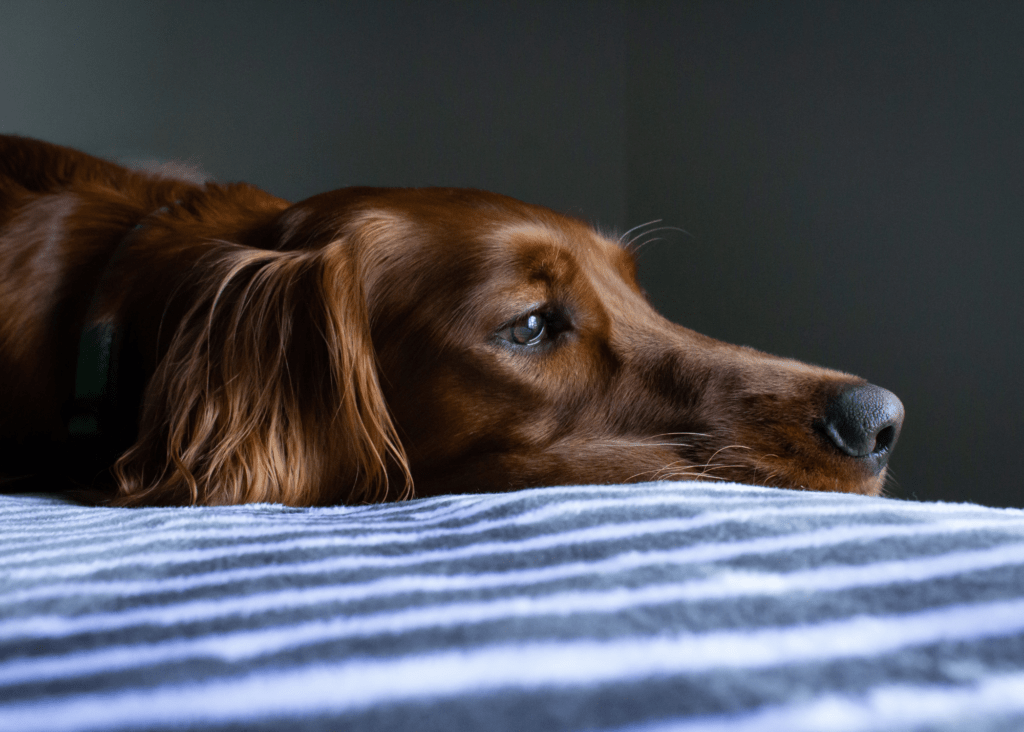
Calming an anxious dog is possible with training, supplements, exposure, music, and even dog beds for anxious dogs.
Recognizing the Signs of Dog Anxiety
Anxiety in dogs can present itself in many different ways and recognizing the signs and triggers can help us pet parents manage their stress better! The signs of dog anxiety include:
- Aggression
- Urinating or defecating in the house
- Drooling
- Panting
- Destructive behavior
- Depression symptoms like loss of appetite and usual activity
- Excessive barking
- Pacing and restlessness
- Compulsive behaviors
Some anxiety behaviors, like aggression and destructive behavior, can be particularly dangerous, so it is best to find a solution to dog anxiety as soon as possible. Other behaviors might be a one off, like shaking during storms, while some, like urinating in the house, is a sign of severe separation anxiety.
The Causes of Dog Anxiety
The are a myriad of reasons a dog could be experiencing anxiety, but some of the most common reasons include:
- Fear
- Separation
- Genetics
- Aging
- Travel
- Storms and fireworks
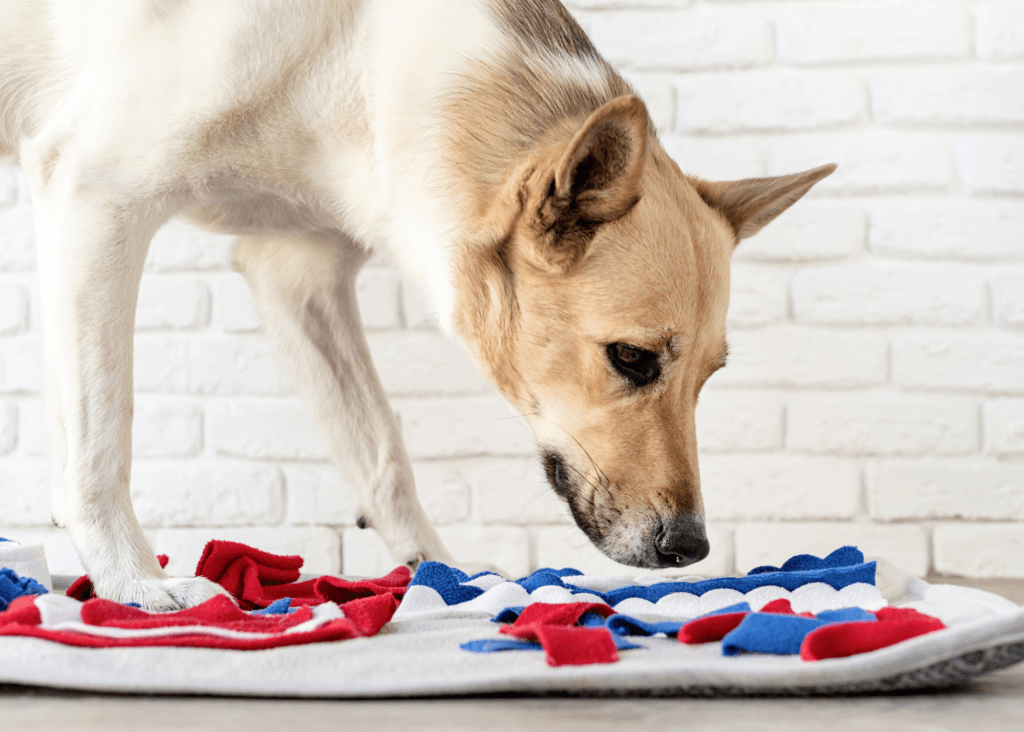
How to Calm an Anxious Dog?
Rest assured, there are ways to reduce your dog’s anxiety! The first step in treating dog anxiety is to speak to your veterinarian, who can help identify the type of anxiety and possible causes and triggers. They can help come up with a treatment plan, while also ruling out any other medical conditions that might be causing this anxiety.
Training and counterconditioning are also an effective way to reduce dog anxiety. With counterconditioning, the idea is to change your dog’s response to the stimuli responsible for anxiety, typically by replacing the anxious behavior with a good behavior like sitting or focusing.
With training, you can also try to desensitize by slowly introducing your dog to the source of its anxiety in small, regulated doses. Exposure and rewarding positive behavior can have a huge impact on anxious dogs.
Contacting a professional dog trainer can also help.
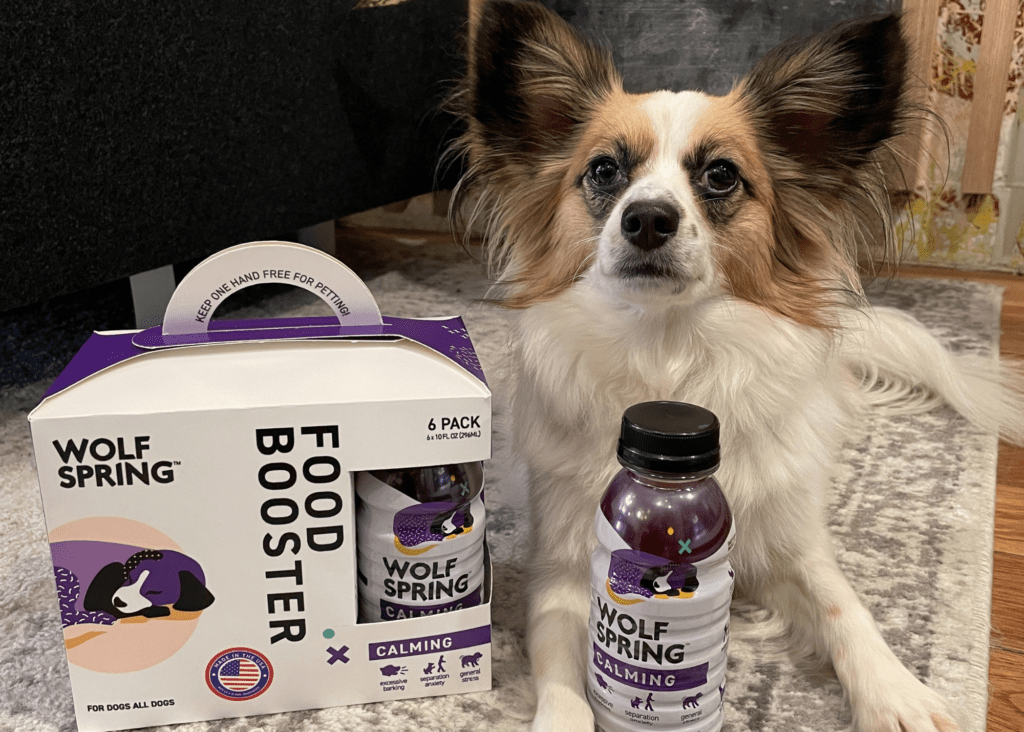
There are also many supplements on the market today for dog anxiety! Some, like Wolf Spring, are easy to give and recommended by vets. In new research, plant ingredients have shown amazing results for dogs like calmed behavior, relaxation, and stress relief.
For dogs with separation anxiety, it is recommended to administer a calming treat, powder, or liquid before leaving to ease your dog’s anxiety. Also leaving out interactive toys and bones can help keep your dog busy and leave them with a positive feeling when you leave. Leaving at set time and having a consistent schedule can help your anxious dog as well. Finally, going for a long walk before you leave can help tire them out, leading to reduced feelings of anxiety.
How to Calm During Storms or Fireworks
Storms and fireworks can be hard to predict, but having solutions ready for anxious dog breeds can help keep these dogs happy and healthy.
Get anxious dogs used to the loud sounds of thunder, construction, and fireworks by playing recordings at low volumes and passing treats to them so they have a positive experience when hearing the sound.
Dogs who are anxious might also benefit from compression vests, which makes them feel more secure during times of stress.
Activities that keep your anxious dog occupied helps them focus on that instead of the stressful sounds outside! Try stuffed Kongs, puzzles, bully sticks, or snuffle mats.
Use a sound machine. A white noise can relax dogs and weaken the loud sounds from outside.
Give your dog a chill spot. Some dogs seek out the bathroom during storms, so make it more comfortable for him by putting his bed there with some water and toys.
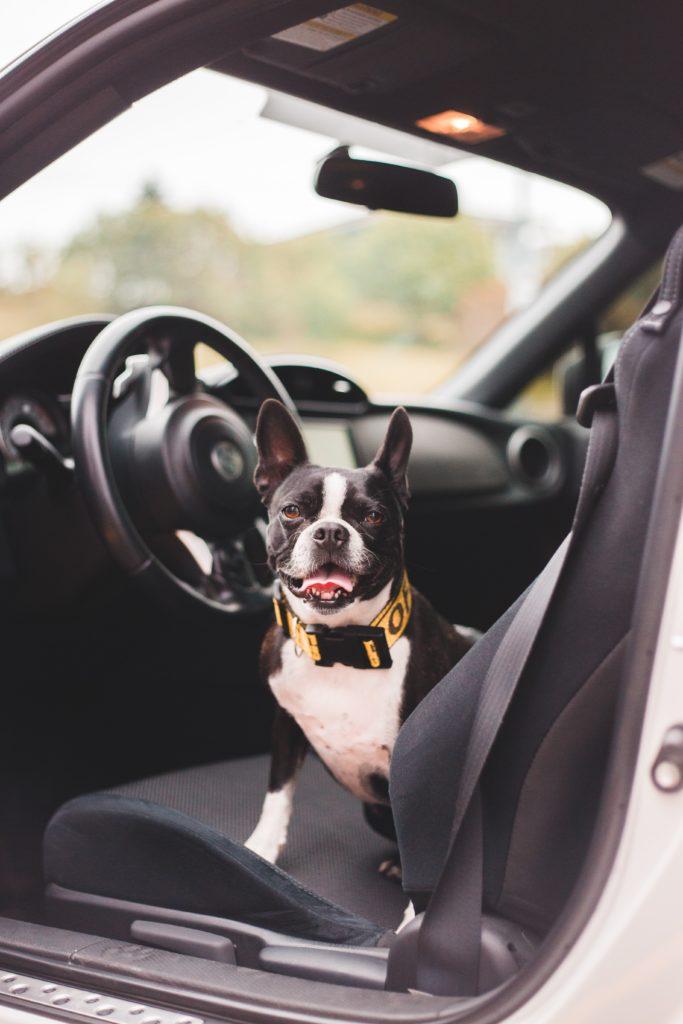
How to Calm an anxious dog in the car
Some dogs love hopping in the car and going for an adventure, while others shake and pant in fear during the ride. A stressed dog in the car can be dangerous for both the dog and the driver. If your dog is fearful in the car, there are ways to help your dog
When dogs have structure, they feel more secure and have less anxiety, so working on manners when getting in and out of your car can help your dog feel less stressed about the ride.
Especially if your dog’s stress in the car is due to motion sickness, try starting with shorter trips to get your dog used to the motion of the car.
If your dog is anxious and paces in the car, using a restraint can help keep you and your dog safe. With a restraint, they cannot dash across the seats causing a distraction.
Your dog’s anxiety in the car can also be due to car sickness! A tell-tale sign of discomfort can be drooling or heavy panting, so if your dog is experiencing these symptoms, an over-the-counter remedy might be able to help your dog feel more comfortable.
Conclusion:
There are a myriad of ways to calm an anxious dog, but it is important to first understand the root of your dog’s anxiety! Dog anxiety can present itself in many ways, like aggression, barking, or destructive behavior and can be caused by fear, separation, or loud noises. In this article, we give pet parents tips and tricks on how to calm anxious and stressed dogs.
